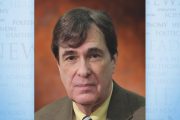The organization known as Convention of States (COS) wants a constitutional convention although its advocates claim that they want only a limited Convention of the States. Altering the terminology used for a constitutional convention, however, does not alter what is being sought by COS advocates. And the claim by COS or anyone that a constitutional convention can be limited to a single amendment, or to several named amendments, cannot be supported. Article V says that a convention may be called by the states “for proposing Amendments.” No number is given. Once a convention is underway, the number of amendments it produces can be limitless, and the current ratification method by the states could be altered or even abolished.
In addition, a recent COS release entitled “John Birch Society Denies Its History and Betrays Its Mission” accuses the Society of reversing the stands taken by JBS Founder Robert Welch and former Chairman Larry McDonald relative to The Liberty Amendment. It also claims that current John Birch Society President John McManus (this writer) has misrepresented Founder Robert Welch and former Congressman Larry McDonald. This is completely erroneous and irresponsible.
In August 1963, Robert Welch urged JBS members to ask legislators in Alabama to approve a resolution favoring the Liberty Amendment. In his urging, Robert Welch made no mention of the Constitution’s second method for gaining amendments, the constitutional convention. He favored the first choice mentioned in Article V which seeks two-thirds approval of both Houses of Congress before a measure is sent to the States where ratification by three-quarters would be needed to complete the process. This method for adding an amendment to the U.S. Constitution happens to be the only method ever employed. For over 200 years, fear of a runaway convention (as occurred in 1787 during deliberations at a convention called to repair the Articles) has kept the amendment process strictly through the first method.
Similarly, Congressman Larry McDonald favored adding the Liberty Amendment to the Constitution. On October 9, 1973, his interview about the matter was published in the Congressional Record. In it, he mentioned that the Amendment was being “advanced in both ways” but he never advocated the convention route. As a member of Congress, he introduced the resolution containing the Liberty Amendment for passage by Congress in the traditional manner. He mentioned but did not favor the existence of the amendment route that would involve a constitutional convention.
Several years before he was slain in 1983, Larry McDonald wrote the 1976 book entitled We Hold These Truths. In it, Larry McDonald capably noted the two routes spelled out in the Constitution for adding amendments. How could he or any constitutional scholar (McDonald was indeed such a scholar) fail to note the existence of these two procedures? But, in the portion of his book discussing amendments, Congressman McDonald expressed explicit choice for neither. To claim that he favored one or the other when he was simply noting both is a complete misrepresentation of what he wrote. The COS release has engaged in misrepresentation, not The John Birch Society.
The COS release notes that, in 1983, Congressman Ron Paul joined with Congressman McDonald in introducing the Liberty Amendment in the House of Representatives. The two men obviously favored the route calling for the amendment to be passed by Congress. They had already introduced the resolution calling for Congress to pass the amendment several times. On no occasion did they express any favor toward the route of a constitutional convention.
On April 30, 2009, Congressman Paul and two co-sponsors again proposed that Congress pass the Liberty Amendment. There is no mention of the constitutional convention route to amend the Constitution in that move.
It is true that state resolutions calling for the Liberty Amendment mentioned the constitutional convention route. And it is equally true that Liberty Amendment author Willis Stone counseled state legislators to call for a constitutional convention on behalf of the Liberty Amendment. But during my own very friendly relationship with Willis Stone, the Liberty Amendment author clearly bared the strategy he was employing. Fearing that such a convention might actually occur if sufficient number of states (34) made the convention call, I asked him point blank, “Do you actually want a constitutional convention?” His very prompt and forceful response to me was, “No, I don’t worry about that because no one would be stupid enough to want a Con-Con.” He was relying on fears of many — including members of Congress — that the existing Constitution would be in jeopardy similar to what befell the Articles of Confederation in 1787. He further explained that if his work among the various state legislatures succeeded in getting close to the number 34 (the number that would trigger a convention), members of Congress would move quickly to pass approval of the measure themselves in order to keep a constitutional convention from becoming a reality.
In 1963, the Liberty Amendment Committee headed by Willis Stone published Action For Americans: The Liberty Amendment, a book promoting the Liberty Amendment. No book on this topic could be issued by the Liberty Amendment Committee without Willis Stone approving of every word. In their book, authors Lloyd G. Herbstreith and Gordon van B. King stated:
Some people have expressed fear of what a Convention might do. They point to the fact that the 1787 Convention was convened to amend the Articles of Confederation; however, it did not do this. It wrote an entirely new Constitution. A convention called now might similarly re-write the entire Document, instead of merely proposing an amendment….
As soon as twenty or more State Legislatures have approved the Liberty Amendment, Congress will approve it, and return it to the States for ratification.
There you have the opinion of the chief promoters of the Liberty Amendment, certainly including Willis Stone. What Mr. Stone told me of his plan is what these two authors, both friends and supporters of Mr. Stone and the Liberty Amendment, have confirmed.
Conclusions:
1. Neither Larry McDonald nor Robert Welch ever favored the route of a constitutional convention for adding amendments to the Constitution. Both merely knew that the Constitution allowed such a method.
2. Larry McDonald’s book We Hold These Truths does not place him in the camp of those favoring a constitutional convention.
3. Willis Stone’s strategy is clear. He wanted to force Congress to act to pass the Liberty Amendment resolution in order to prevent creation of any constitutional convention.
4. The book by Herbstreith and King confirms the Stone strategy.
5. An apology for accusing The John Birch Society for denying its history and betraying its mission directed to me and to the memory of Robert Welch, Larry McDonald, and Willis Stone should be issued by COS. It would be received with gratitude.
Learn of other false accusations made by Con-Con supporters here.
John F. McManus is president of The John Birch Society and publisher of The New American. This column appeared originally at the insideJBS blog and is reprinted here with permission.





